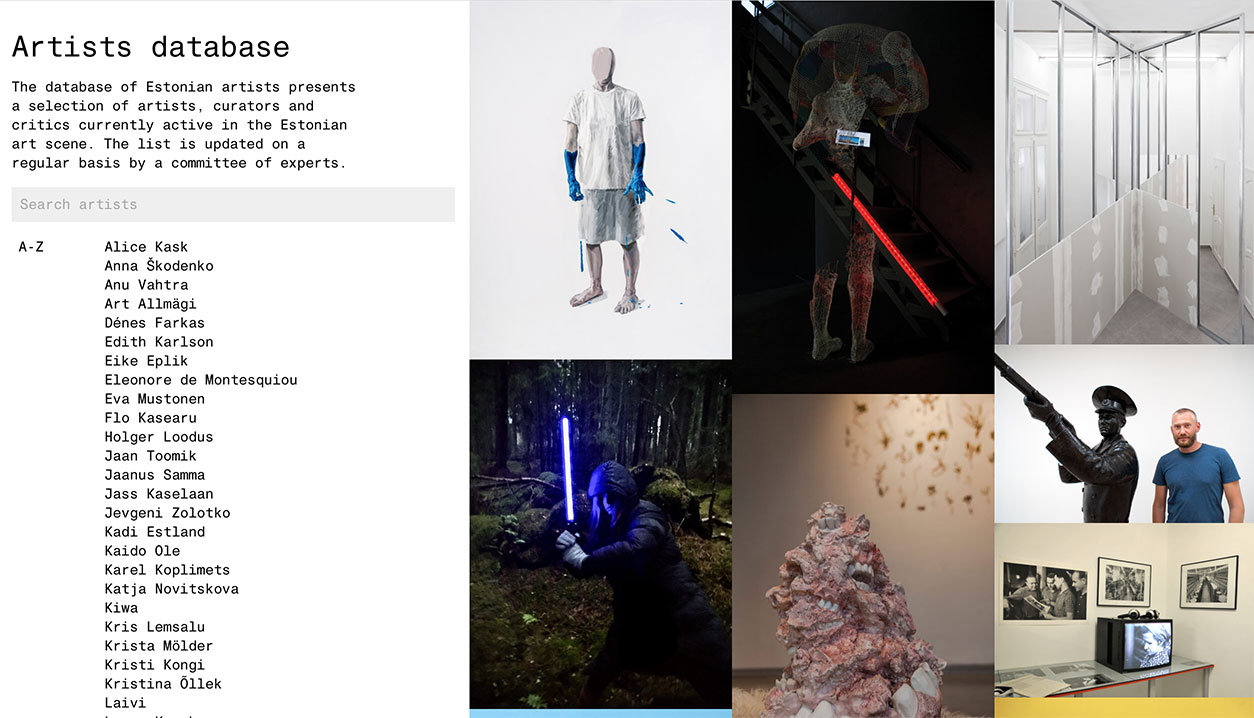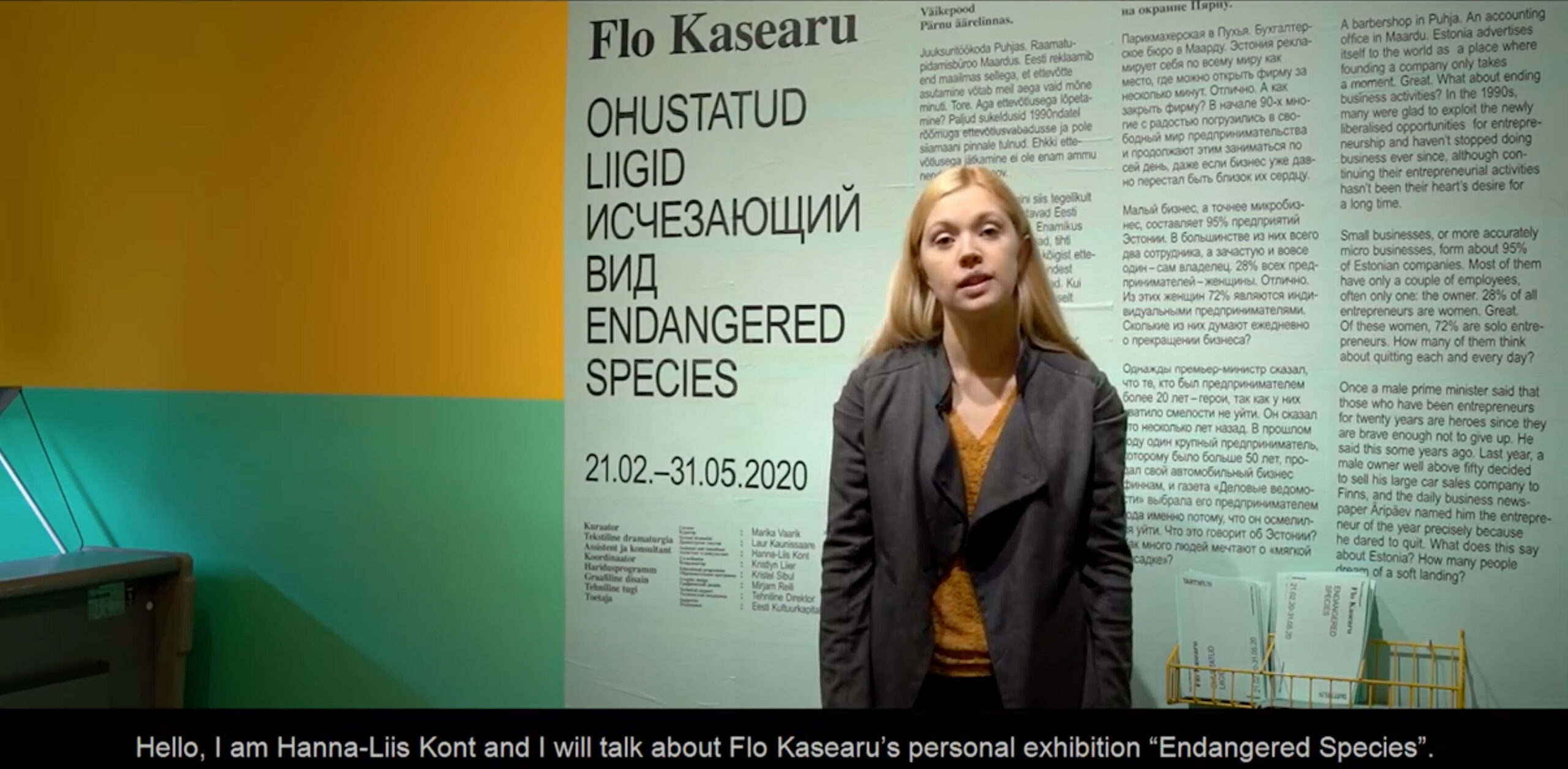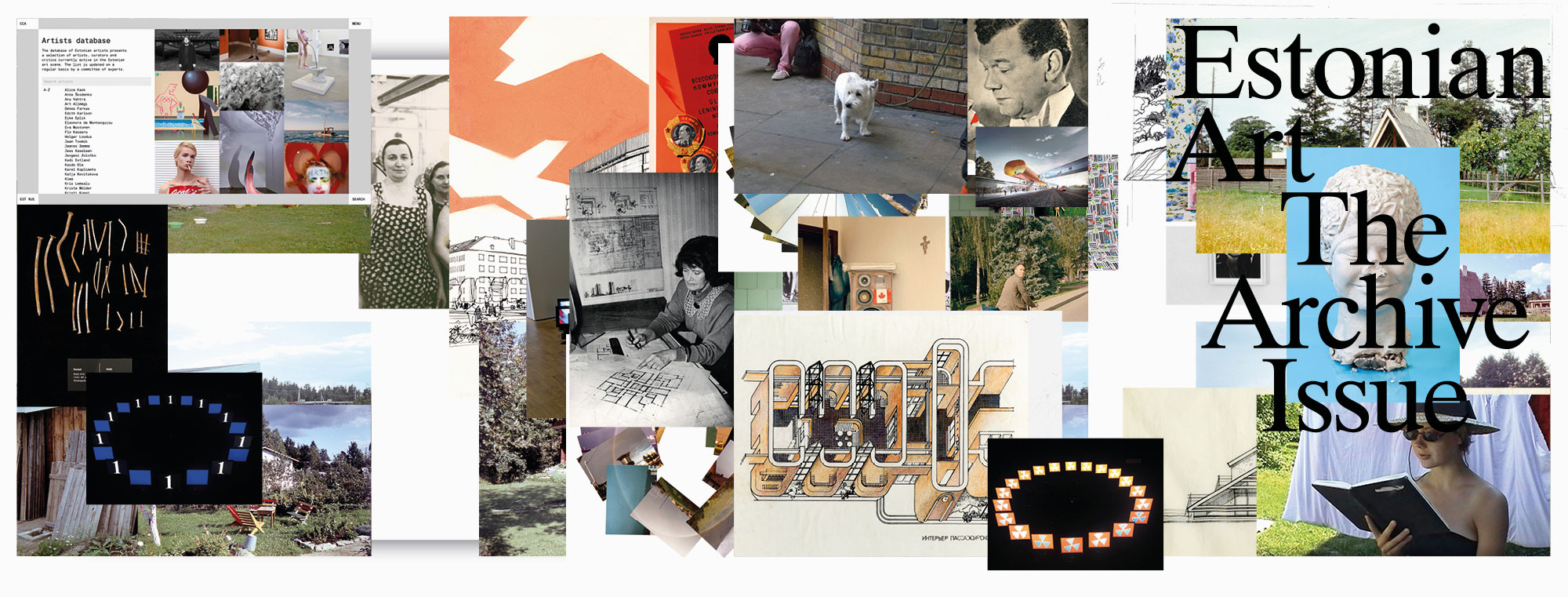How Estonian art institutions are opening their virtual borders

In the beginning of April, Tallinn Art Hall introduced a virtual platform, bringing its exhibition programme online for audiences worldwide. The unique platform was created by developing a new format that builds on existing well known and accessible tools and processes—cinematography, interactivity, and basic web applications, not ground-breaking new technology, VR headsets, or 360-degree cameras.
“The question of how to make our shows internationally available and accessible for audiences that cannot physically come to us is a long-standing one,” says Taaniel Raudsepp, director of Art Hall and the author of the idea of the virtual platform. Raudsepp started to look for different virtual solutions already in 2018 and got the idea of using cinematography in a virtual exhibition platform from a Jim Jarmusch movie.
Besides Taaniel Raudsepp, the format of the virtual platform was developed by Sven Raju (coding and design), Elen Lotman (Video directing), Ivar Taim (Cinematography), Madis Tüür (Video production). The creators of the platform are currently seeking partners to develop it further and release it for free use. “I would really love to view exhibitions worldwide in this manner,” says Raudsepp.
The platform also offers live curators’ tours via video platforms, YouTube and Zoom. Current exhibitions available on the website include:
“Endless Story”
by Mihkel Ilus and Paul Kuimet (curator Siim Preiman)
“The Best You Can Ever Be”
by Ede Raadik (curator Corina Apostol)
“Dear Algorithm,”
by Laura Kuusk (curator Niekolaas Lekkerkerk)

Estonian CCA has been one of the main developers of international collaborations in the Estonian art scene through connecting artists, curators, critics, and institutions since 1992. “One core activity of CCA has been inviting over international curators, and introducing them to the scene,” says director of CCA Maria Arusoo, “In the current situation when borders are closed and all international projects postponed or cancelled, we have to think of new ways in how to still proceed with introducing Estonian art internationally.”
In the beginning of 2020, CCA introduced the Estonian artists database which offers the first gateway to the Estonian art scene. At the moment, the database contains original biographies and selected projects documentation, both in Estonian and English, of nearly 50 artists currently active in the scene. “During the quarantine we have been updating the database even more actively as we can see the important role this plays during a time when physical communication between an artist and curator cannot happen,” says Arusoo.
CCA also has an audio-visual archive of more than 500 works with Estonian video artists, starting from 1988. “During the early nineties, video served as a multifunctional medium, firstly – for its accessible and portable qualities, but secondly, for its newness,” explains Marika Agu, archive project manager. CCA had a special focus on video art and has been collecting performance and exhibition documentation as well as original artworks. The archive has been expanding ever since, offering a wide range of artistic production in the video format. The total list of videos is found at CCA’s website. “We are happy that we can now also provide remote viewing, so if you’re interested please send your request to: post@cca.ee,” says Agu.

Tartu Art Museum, located in the second biggest city in Estonia, has also been closed for about a month, together with other cultural institutions in Estonia. Lately, the museum has created video guided tours with English subtitles of two of the museum’s recent shows: “Endangered Species” by artist Flo Kasearu and “The Anatomy of Estonian Art Jewellery 1953-2019” (both available on the museum’s YouTube channel).
“Tartu Art Museum defines itself as an international art institution and, as such, we consider it equally important to present foreign art to locals and to popularise Estonian art in the wider world,” says Joanna Hoffmann, acting director of the museum, “Even before the COVID-19 crises we always made sure that our exhibitions, videos, publications and social media were available in at least Estonian and English. In addition to that we also try to reach out for the local (but also foreign) Russian community by providing as much of our materials as possible in Russian.”

Estonian Art is a magazine about the Estonian art scene, published in English for already more than 20 years. The new issue, titled The Archive Issue, comes out at the end of April, both in print and on the webpage estonianart.ee.
Estonian Art 1/2020 is dedicated to archives, collecting, storing and preserving, and focuses on the relationship between archives, artists, architecture and art institutions in Estonia in the digital era. Among other topics, it also includes articles on the difficulties of preserving new media installations, and the problematics of digitising artworks.
“The Archive Issue reflects on the current conditions of the COVID-19 world, in which museums and exhibition spaces are closed, but virtual tours and exhibitions, digital collections and archives have become highly relevant,” says Annika Toots, the editor-in-chief of the magazine.
The Art Museum of Estonia shares its digital collection – an image database containing photos and records of the works of art in the collections of the museum. The museum also shares the video recording of the recent international conference “Women Artists in Baltic and Nordic Museums” and close-ups of the famous Rode Altarpiece and the most talented sculptor of the baroque era, Christian Ackermann, to dive into the depths of the history of Estonian art.